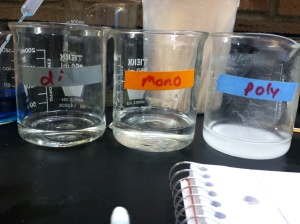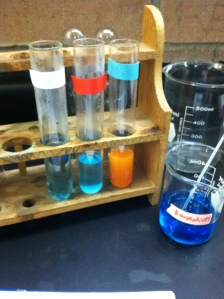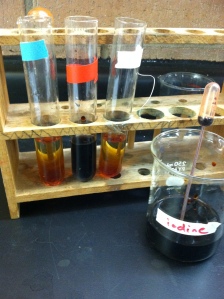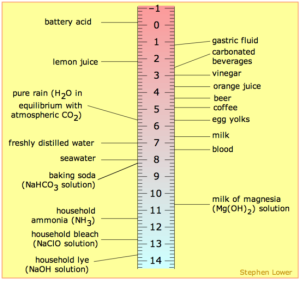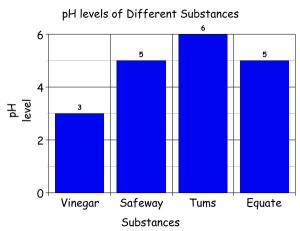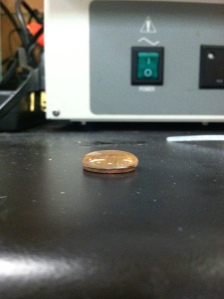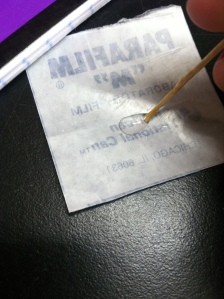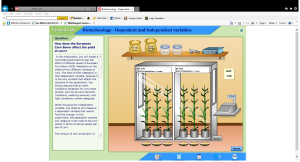This is a link to the questions we answered about this lab.
https://docs.google.com/document/d/1sgUQq7NYPrTE5-e0B6Cqd-yaD6veSXjOYCCuj7o85vc/edit?usp=sharing
Carbohydrates are macromolecules. They are made up of carbon, hydrogen, and oxygen. There are three different types of carbohydrates. Monosaccharides are the building blocks and are just one molecule. Disaccharides are two monosaccharides linked together. Polysaccharides are chains of multiple monosaccharides linked together.
We have been working on a lab about how to identify different carbohydrates. We wanted to be able to determine whether a substance is a monosaccharide, a disaccharide, or a polysaccharide. The materials that were needed were beakers, pipettes, test tubes, Benedict’s solution, iodine, a way to heat the solutions, a monosaccharide, disaccharide, and a polysaccharide. We began by testing how a monosaccharide, disaccharide, and polysaccharide change when they are mixed with Benedict’s solution. We poured each of the saccharides into their own test tubes. We then put a reasonable amount of drops of the Benedict’s solution into each of the test tubes. Next, we heated them up for five minutes. After they were heated, we could see the change in the monosaccharide. The monosaccharide changed to an orange color. The disaccharide and the polysaccharides did not have a color change when mixed with the Benedict’s solution. The next thing we did was to test how these three saccharides change when they are mixed with iodine. Like before, we poured each of the saccharides into their own test tubes. Next, we added a reasonable amount of drops of iodine to each of the test tubes. We didn’t need to heat these mixtures. They monosaccharide and disaccharide had no change when mixed with the iodine. There was a big change in the color of the polysaccharide. When the iodine and polysaccharide were mixed, the mixture turned a dark black color.
The next part of the lab was to test different types of substances to see whether they were a monosaccharide, disaccharide, or polysaccharide. The five substances we decided to test were sugar, malt sugar (maltose), cornstarch, milk sugar, and graham crackers which we crushed into small pieces. We began by placing each of these five substances into their own beaker. We then added water into each of these five beakers so that these substances could dissolve in the water. After that, we poured each of the substances from their beakers into their own test tubes. We labeled of the test tubes so we would remember which substance they were. Next, we added drops of Benedict’s solution to each of the test tubes and heated them for five minutes. When we took them from the heat, we could see a color change to orange in the malt sugar and the milk sugar. From this, we could tell that malt sugar and milk sugar have the presence of glucose. You would think that these were monosaccharides because of the color change, but they are actually disaccharides. The other mixtures were just a blue color. The next step was to wash the test tubes and pour the five substances that were mixed with water into their own test tubes again. We then put drops of iodine into each of the test tubes. We could see a color change to a dark black color in the graham crackers and the cornstarch. This color change showed that the cornstarch and graham crackers are polysaccharides. The other mixtures were just the color of the iodine.
From these results, we can see that things such as graham crackers and cornstarch are polysaccharides. We would think that malt sugar and milk sugar are monosaccharides, but since they are essentially maltose and lactose, they are actually disaccharides. They showed a color change in the Benedict’s test because they have the presence of glucose. Sugar is a disaccharide and it had no change in either of the tests.
